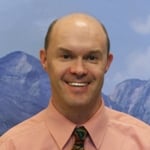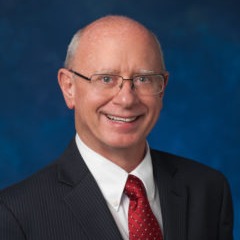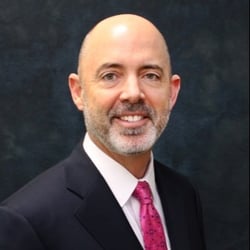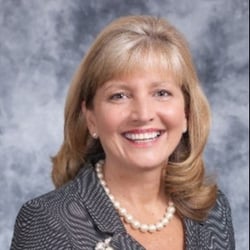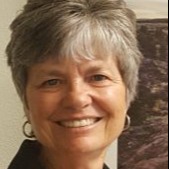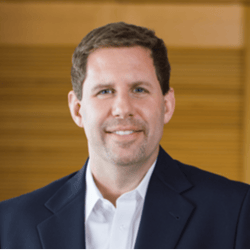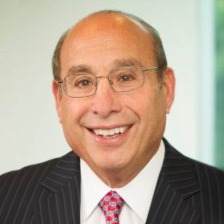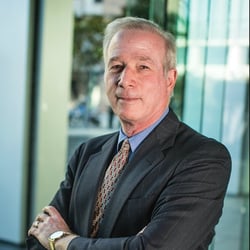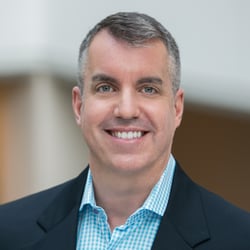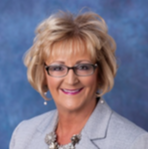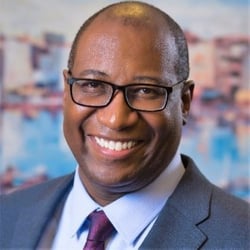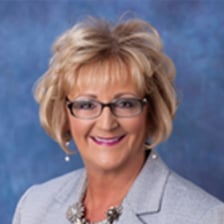 Lorie Shoemaker, DHA, RN, MSN, is the SVP and Chief Nursing Officer at CHI – Texas Division, where she is responsible for the oversight of the quality of nursing care and nursing practice across the acute and post-acute care continuum. Prior to joining CHI St. Luke’s Health, Dr. Shoemaker served in a variety of leadership roles over a 29-year career at Palomar Health in California, including the System Chief Nurse Executive. In this role, Dr. Shoemaker provided oversight for nursing care across the system that included three acute care hospitals, two skilled nursing facilities, as well as ambulatory and home health agencies.
Lorie Shoemaker, DHA, RN, MSN, is the SVP and Chief Nursing Officer at CHI – Texas Division, where she is responsible for the oversight of the quality of nursing care and nursing practice across the acute and post-acute care continuum. Prior to joining CHI St. Luke’s Health, Dr. Shoemaker served in a variety of leadership roles over a 29-year career at Palomar Health in California, including the System Chief Nurse Executive. In this role, Dr. Shoemaker provided oversight for nursing care across the system that included three acute care hospitals, two skilled nursing facilities, as well as ambulatory and home health agencies.
Key Takeaways
- In order to align diverse stakeholders around a common goal, start first with creating a shared mission and vision.
- Designing and implementing collaborative solutions is an iterative process that requires grit and resilience.
- Openly sharing ideas and creating meaningful solutions to improve the health of the population is one of the many benefits of cross sector collaboration.
TLD Group: What role does your organization play in improving the health of the population it serves?
Shoemaker: Presently, CHI – Texas Division is responsible for caring for people across the continuum, but our primary focus in on the acute-care setting. That may seem very limited, but we are evolving. We have historically been a very hospital-centric system, and we are still very acute-care focused. Our system has grown from one or two acute care facilities to now over 17. We have multiple clinics across our vast geographic footprint, and we have several freestanding emergency centers in Texas. However, we know that in order to truly improve the health of the population we serve, we need to get outside of the four walls of the hospital and expand into a broader clinically-integrated network that encompasses all players in the continuum of healthcare delivery. To do so, we feel that we are in a unique position to act as a healthcare convener. Given our size and geographic footprint, the rest of the healthcare ecosystem – post-acute providers, payers, pharmacies, etc. – want to work with us. They recognize that we have a large patient population, as well as the size and clout to get things done and move things forward. I see us as the convener that can bring together disparate pieces of the healthcare ecosystem, and develop something that is bigger than all of us.
TLD Group: Can you share an example of how you’ve convened other healthcare organizations?
Shoemaker: I can speak to what we are doing on the clinical side. We have done a search of all skilled nursing facilities and home health agencies in our geographic footprint, of which there are hundreds. By our own experience discharging patients to skilled nursing facilities and home health agencies, we were looking at admission rates and other quality metrics to determine the best potential partners. We narrowed it down to 150 skilled nursing facilities and 76 home health agencies that we thought would have the same high-quality standards that we want to provide. We sent out a request-for-information (RFI), and of the 150, we received about 50 that submitted a response to our RFI. From there we narrowed it down to the top 23 providers. Then, we conducted unannounced site visits to make sure they are who they say they are, the same way the joint commission does unannounced visits to hospitals and health systems. We went through the same process with the home health agencies. Our final list included 23 skilled nursing facilities and 26 home health agencies that we believe have the top quality. We will soon be sending out a memorandum of agreement inviting them to participate in our high-performing network. Then, we will set up a structure that brings a representative to the table, so that we as the acute-care provider, and two of the post-acute providers, can co-develop the metrics and processes for keeping our patients from returning unnecessarily to our facilities. This was our strategic method of identifying, assessing, and convening potential clinical partners to develop this high-performing network of skilled nursing and home health providers. My next step is to bring payers to our “convening” table. To do so, I will tap into our contracting department for assistance with identifying players that we want to do business with in a more formalized fashion. Not all payers are alike, just like not all healthcare providers are alike, so they could assist in identifying 2 or 3 payers who might be interested in participating in this process as well.
TLD Group: That is the biggest obstacle to developing your organization’s clinically-integrated network?
Shoemaker: The biggest obstacle is that our reimbursement and incentives are not aligned. The health system gets paid to keep people out of the hospital, and in that regard, we are more aligned with some of the changes in reimbursement. However, our physicians are primarily still on a fee-for-service reimbursement scheme. As long as they get paid for every patient in a bed, and the hospital loses money for every patient in the bed, it is difficult to align our goals. Everybody acts in their own best self- interest. It’s hard for people to take that leap and recognize where healthcare reimbursement is heading. We still have one foot on the “fee-for-service” dock and one on the boat headed towards value-based reimbursement, but we are still paying the majority of our bills with our foot on the dock.
TLD Group: How do you create common ground among competing priorities?
Shoemaker: The reason people go into medicine – whether you become an administrator, physician, nurse, etc. – is with the patient or consumer at the center. That’s our common denominator. As long as we can focus on what’s in the best interest of the patient, we can at least get people to the table. It sounds simple, but you’ve got to break down a whole lot of barriers to get there. The more stakeholders there are around the table, the more personalities and competing interests there are to align. I start any big project by clearly identifying the vision. We have to agree on what we’re trying to accomplish, and then every meeting and every decision is made with the underlying question in mind, “How does this further our mission and vision?” If you don’t align on the vision at the get-go, you will struggle throughout the whole process. Your decisions will be faulty, and you’ll be regrouping constantly. It’s also important to identify the outcome metrics – how we know if we’ve been successful. We also need to hold each other accountable by drafting a project plan and identifying the responsible party for each step. That way, when we re-convene, we will know what progress we have made and where we need to improve.
TLD Group: Can you provide an example of a collaboration with stakeholders outside of the health ecosystem?
Shoemaker: I can share a phenomenal example from my work at Palomar Health, in which I convened several constituents from both within and outside of the health ecosystem, each with varying interests and priorities, to inevitably create our Pathmaker Intern Program.
At Palomar Health, we were facing a steep workforce shortage, particularly in regard to nurses. Furthermore, the demographics of our workforce did not mirror the population we were serving; we were predominately a white, female workforce taking care of a population consisting of at least 50% Hispanic patients. I thought, how could we partner with local community resources to increase the number of healthcare providers and diversify the workforce? That was my imperative.
At the same time, a new high school was opening up in one of our communities – Mission Hills High School. The principal was very visionary, and wanted his students to graduate not only with a diploma, but also some real-life skills they can take with them when they leave high school. He and I got together to talk about what could we do at the high-school level that could engage students in a healthcare career, and provide them with tangible healthcare skills. That was his reason for coming to the table.
Additionally, our hospital contributed financial resources to the local college, California State University San Marcos, to build and develop a School of Nursing. The Director of Nursing for that program brought us in as local partners to help develop the nursing school curriculum. They became a third stakeholder around the table.
We (Palomar Health) also had a Director of Community Outreach whose job it was to bring community partners together around some sort of “common good”. He was working with a not-for-profit company called COPE Health Solutions, whose Clinical Care Extender program (now called COPE Health Scholars) recruited college-student volunteers from dental school, medical school, or nursing school, and taught them clinical skills (e.g. checking vital signs and patient care assistance) with the intention of preparing them for careers in healthcare.
TLD Group: How did you align these various stakeholders around a common goal?
Shoemaker: At first, we held a series of one-off meetings to just get the ball rolling. Then, we held a two-day retreat to bring all these stakeholders together. Everyone at that retreat was an innovative thinker, allowing us to freely share our priorities and imperatives. There were several brainstorming sessions which eventually resulted in a project plan for what became an unbelievable program.
We recruited student volunteers at both the high school and college levels, and through what we called “Healthcare Academies,” we introduced them to the healthcare environment. They took coursework in advanced chemistry and anatomy & physiology, and were also a part of COPE’s Clinical Care Extender program, which allowed the students to become volunteer interns at our hospital. We further developed them to become our medical interpreters, not just for Spanish but for all kinds of languages. By the time I left Palomar, we had over 85 FTE’s (full-time equivalents) of free volunteer labor from high school and college students who were vested in a career in healthcare. Through this program, the students were essentially tied to our organization throughout their collegiate career such that when they graduated, where do you suppose they wanted to work? For Palomar Health, of course. They knew the organization and we knew them, and many of them went into our new Graduate Nurse Residency program. Essentially, this program was our strategic plan to develop a ready-made workforce to resolve our nursing shortage. It also benefited the high school, whose mission it was to provide high school students with real-life skills, and benefited the School of Nursing and COPE Health Scholars, who also shared our mission to develop the next generation of healthcare workers.
TLD Group: Did you and/or the other stakeholders face any setbacks or roadblocks to advance the mission? If so, how did you overcome them?
Shoemaker: During that retreat, we outlined which stakeholders would be assigned to which activities. For example, there was one workgroup whose objective was to recruit student volunteers. There was also another workgroup that developed the curriculum at the high-school level. Most of the roadblocks to accomplishing these incremental steps had to do with regulatory issues, and each stakeholder group had their own individual obstacles that had to be overcome. There was also the issue of how our program would be financed. We at Palomar worked through our foundation and receive grant money to overcome some of the financial obstacles, and COPE Health Solutions was a tremendously helpful partner in regard to securing funds through foundations as well. What made it possible was that everybody leveraged their expertise to work through the obstacles they were facing at that time to continue to keep this going. It was a vision that a lot of people could wrap their head around. We all believed in it so much that we all did what we had to do to remove those roadblocks.
TLD Group: In your experience working with various stakeholders, what has been your “key” learnings?
Shoemaker: I have had to learn to develop patience with the process. I’m a critical care nurse by background, and so I’ve spent many years taking care of the sickest of the sick. It is my nature and inclination to make decisions with the best available information that I have, and I’ve had to make these decisions quickly because patients’ lives depend on it. I’ve had to learn that not everybody thinks like that; some people are much more data-driven and need more information and time to make a decision. I’ve had to learn to slow down and let people process. But at the end of the day, we have to keep pushing forward. I give people enough time to process, but give them a fixed endpoint so that a decision can be made and we can move on to accomplish our overall goal.
View our other HELM Q&A Interviews:


 Lorie Shoemaker, DHA, RN, MSN, is the SVP and Chief Nursing Officer at CHI – Texas Division, where she is responsible for the oversight of the quality of nursing care and nursing practice across the acute and post-acute care continuum. Prior to joining CHI St. Luke’s Health, Dr. Shoemaker served in a variety of leadership roles over a 29-year career at Palomar Health in California, including the System Chief Nurse Executive. In this role, Dr. Shoemaker provided oversight for nursing care across the system that included three acute care hospitals, two skilled nursing facilities, as well as ambulatory and home health agencies.
Lorie Shoemaker, DHA, RN, MSN, is the SVP and Chief Nursing Officer at CHI – Texas Division, where she is responsible for the oversight of the quality of nursing care and nursing practice across the acute and post-acute care continuum. Prior to joining CHI St. Luke’s Health, Dr. Shoemaker served in a variety of leadership roles over a 29-year career at Palomar Health in California, including the System Chief Nurse Executive. In this role, Dr. Shoemaker provided oversight for nursing care across the system that included three acute care hospitals, two skilled nursing facilities, as well as ambulatory and home health agencies.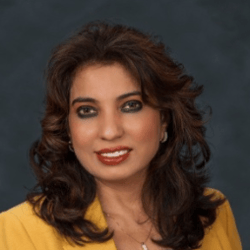

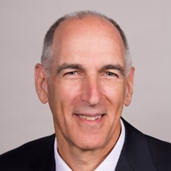

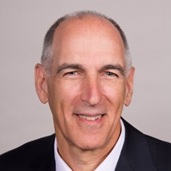 Andrew Baskin, MD, is Aetna’s Vice President, National MedicalDirector for Quality and Clinical Policy and served as the Interim Chief Medical Officer (in 2014). He works on initiatives to measure and improve quality of care, the provision of evidence based care, quality measurement implementation and public reporting, health plan accreditation, and the establishment of performance based networks. Additionally, Andy partners with others to help establish programs which create incentives for more effective and efficient care, influence and assure compliance with healthcare reform regulations, develop products to improve affordability and quality of care, and promote payment reform.
Andrew Baskin, MD, is Aetna’s Vice President, National MedicalDirector for Quality and Clinical Policy and served as the Interim Chief Medical Officer (in 2014). He works on initiatives to measure and improve quality of care, the provision of evidence based care, quality measurement implementation and public reporting, health plan accreditation, and the establishment of performance based networks. Additionally, Andy partners with others to help establish programs which create incentives for more effective and efficient care, influence and assure compliance with healthcare reform regulations, develop products to improve affordability and quality of care, and promote payment reform. Mohamed Diab, MD, Vice President of Provider Transformation leads population health management at Aetna. His focus is on providers as they transform their care delivery to achieve the “Triple Aim” by improving quality of care and reducing unnecessary cost. Mohamed has more than 25 years of experience as a provider as well as an executive in the payer and consulting industries. He has a background in medical management, pharmacy benefit management, clinical informatics and cost management programs.
Mohamed Diab, MD, Vice President of Provider Transformation leads population health management at Aetna. His focus is on providers as they transform their care delivery to achieve the “Triple Aim” by improving quality of care and reducing unnecessary cost. Mohamed has more than 25 years of experience as a provider as well as an executive in the payer and consulting industries. He has a background in medical management, pharmacy benefit management, clinical informatics and cost management programs.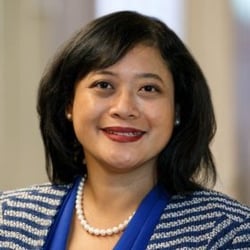

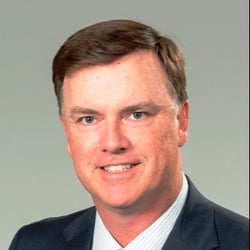

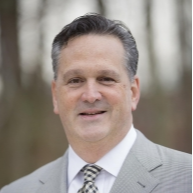

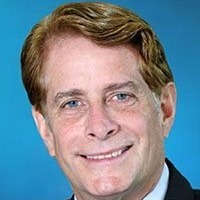

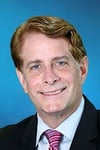 Robert C. Garrett is Co-CEO of Hackensack Meridian Health, which has four hospitals ranked among the top 10 in New Jersey according to U.S. News & World Report – including No. 1 ranked Hackensack University Medical Center - more than any other network in the state. Robert focused on aggressive expansion of the Hackensack University Network before its merger with Meridian Health. As Co-CEO, Robert concentrates on innovation and leading partnerships, including launching New Jersey’s first private medical school with Seton Hall University and a historic partnership with Memorial Sloan Kettering Cancer Center.
Robert C. Garrett is Co-CEO of Hackensack Meridian Health, which has four hospitals ranked among the top 10 in New Jersey according to U.S. News & World Report – including No. 1 ranked Hackensack University Medical Center - more than any other network in the state. Robert focused on aggressive expansion of the Hackensack University Network before its merger with Meridian Health. As Co-CEO, Robert concentrates on innovation and leading partnerships, including launching New Jersey’s first private medical school with Seton Hall University and a historic partnership with Memorial Sloan Kettering Cancer Center. John K. Lloyd is Co-CEO of Hackensack Meridian Health, one of the largest, most comprehensive health networks in New Jersey, which includes 13 hospitals, 28,000 team members, more than 6,000 physicians and over 140 patient care locations across the state. John has focused much of his career on developing a full continuum of care – long before national health care reform mandated such changes. As Co-CEO, John oversees all non-acute care hospital businesses, including population health and the foundations. John’s expertise and vision have helped the network meet and exceed the challenges of health care reform.
John K. Lloyd is Co-CEO of Hackensack Meridian Health, one of the largest, most comprehensive health networks in New Jersey, which includes 13 hospitals, 28,000 team members, more than 6,000 physicians and over 140 patient care locations across the state. John has focused much of his career on developing a full continuum of care – long before national health care reform mandated such changes. As Co-CEO, John oversees all non-acute care hospital businesses, including population health and the foundations. John’s expertise and vision have helped the network meet and exceed the challenges of health care reform. Patrick R. Young is president of Population Health for Hackensack Meridian Health, where he leads the Population Health division and is responsible for accelerating the development of strategic priorities related to health care reform; population health management; Meridian’s Medicare Shared Savings Accountable Care Organization; Hackensack Meridian Health Partners, Hackensack Meridian Health’s clinically integrated network; health insurance partnerships; as well as overseeing Managed Care.
Patrick R. Young is president of Population Health for Hackensack Meridian Health, where he leads the Population Health division and is responsible for accelerating the development of strategic priorities related to health care reform; population health management; Meridian’s Medicare Shared Savings Accountable Care Organization; Hackensack Meridian Health Partners, Hackensack Meridian Health’s clinically integrated network; health insurance partnerships; as well as overseeing Managed Care.
